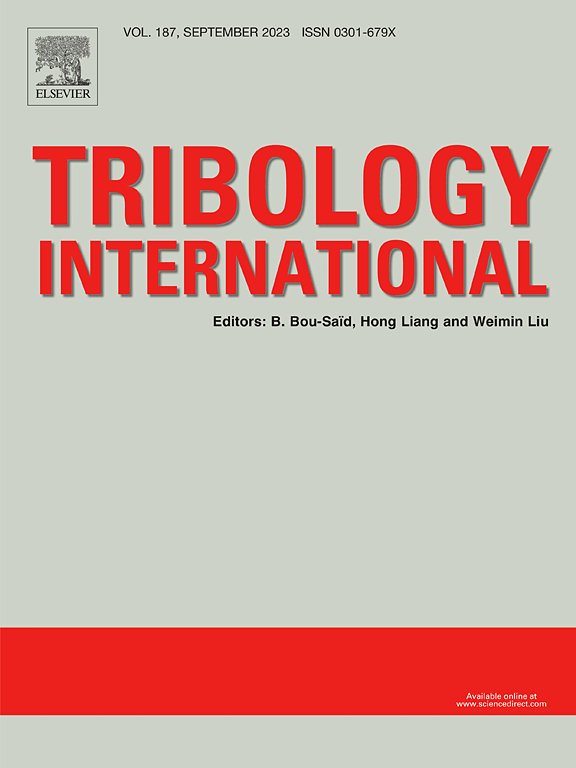不同高度比和转矩比双螺母连接螺栓的拧紧性能
IF 6.1
1区 工程技术
Q1 ENGINEERING, MECHANICAL
引用次数: 0
摘要
对双螺母连接螺栓的拧紧性能进行了研究。转矩比T2/T1定义为从螺母(即s型螺母)转矩T2与主螺母(即m型螺母)转矩T1之比,高度比h2/h1的定义与转矩比一致。采用4种扭矩比和5种高度比作为拧紧试验参数,揭示螺栓轴向力的变化规律。然后,建立参数化有限元模型,揭示m型螺母与s型螺母的接触特性,进一步分析s型螺母对螺栓附加拉力的影响。结果表明:当m型螺母和s型螺母扭矩均最大时,螺栓的轴向力最大;锚杆轴向力随T2/T1的增大而增大,最大值为初始轴向力的4倍。当T2/T1 = 4时,螺栓轴向力随高度比h2/h1变化显著。其中,当h2/h1 < 1时,轴向力随高度比的增大而减小,当h2/h1 > 1时,轴向力则相反。另外,当T2增加到m型螺母的1.5倍左右时,附加的拉伸力几乎等于螺栓的轴向力。最后,本文建立的双螺母拧紧理论可以揭示s型螺母拧紧过程中螺纹区轴向力分布和螺栓轴向力变化趋势。本文章由计算机程序翻译,如有差异,请以英文原文为准。
Tightening performance of dual-nut connecting bolts with different height ratios and torque ratios
This paper investigates the tightening performance of dual-nut connecting bolts. The torque ratio T2/T1 is defined as the ratio of the slave nut (i.e., S-nut) torque T2 to the master nut (i.e., M-nut) torque T1, and the definition of the height ratio h2/h1 is consistent with the torque ratio. Four torque ratios and five height ratios were used as parameters for tightening tests to reveal the variation of the axial force of bolts. Then, a parametric finite element model was established to reveal the contact characteristics of M-nut and S-nut, further analyzing the influence of S-nut on the additional tension of the bolt. The results demonstrate that the axial force of the bolt is largest when both M-nut and S-nut torques are maximized. Furthermore, the axial force of the bolt improves with the increase of T2/T1, and the maximum is four times the initial axial force. When T2/T1 is four, the axial force of the bolt changes significantly with the height ratio h2/h1. Specifically, if h2/h1 is less than one, the axial force decreases as the height ratio increases, while the inverse is true when h2/h1 is greater than one. Additionally, the additional tensile force is almost equal to the axial force of the bolt when the T2 increases to approximately 1.5 times that of the M-nut. Finally, the dual-nut tightening theory established in the paper can reveal the distribution of axial force in the threaded area and the trend of axial force variation of bolts during the S-nut tightening process.
求助全文
通过发布文献求助,成功后即可免费获取论文全文。
去求助
来源期刊

Tribology International
工程技术-工程:机械
CiteScore
10.10
自引率
16.10%
发文量
627
审稿时长
35 days
期刊介绍:
Tribology is the science of rubbing surfaces and contributes to every facet of our everyday life, from live cell friction to engine lubrication and seismology. As such tribology is truly multidisciplinary and this extraordinary breadth of scientific interest is reflected in the scope of Tribology International.
Tribology International seeks to publish original research papers of the highest scientific quality to provide an archival resource for scientists from all backgrounds. Written contributions are invited reporting experimental and modelling studies both in established areas of tribology and emerging fields. Scientific topics include the physics or chemistry of tribo-surfaces, bio-tribology, surface engineering and materials, contact mechanics, nano-tribology, lubricants and hydrodynamic lubrication.
 求助内容:
求助内容: 应助结果提醒方式:
应助结果提醒方式:


